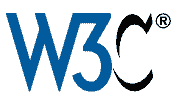Tutorials Overview
These tutorials show you how to develop web content that is accessible to people with disabilities and that provides a better user experience for everyone.
They provide resources for a variety of roles, including:
- Web developers will find guidance and boilerplate solutions for many common coding challenges.
- Web designers will learn how to create web page components with built-in accessible and inclusive design practice.
- Web trainers will find examples to teach people about accessible web design and development.
- Content authors will learn concepts and techniques for preparing their content in an accessible way.
- Project managers will gain an understanding of ways to integrate accessibility into their project planning.
 The tutorials cover various accessibility topics, based on common tasks in web projects. For example, they show you how to provide accessible images and tables using a variety of web technologies, including HTML4, HTML5, CSS3, WAI-ARIA, MathML, and SVG. The concepts and techniques explained in the tutorials apply to other formats as well.
The tutorials cover various accessibility topics, based on common tasks in web projects. For example, they show you how to provide accessible images and tables using a variety of web technologies, including HTML4, HTML5, CSS3, WAI-ARIA, MathML, and SVG. The concepts and techniques explained in the tutorials apply to other formats as well.
Web authoring tools (Content Management Systems (CMS), WYSIWYG editors, word processors, etc.) can often help you create content that is accessible as shown in these tutorials.
Tutorial Topics
-
Images: Learn how to use images in an accessible way, including decorative, linked, and grouped images.
-
Tables: Find out how you can add structural information to tables so that assistive technology can identify the relationship between table headers and data.
Additional tutorials are planned and will be added here once they are completed and reviewed.
Additional Resources
- How People with Disabilities Use the Web: An introduction covering a variety of disabilities, including age-related impairments
- Accessibility Principles: Introduces some of the web accessibility requirements for websites, web applications, browsers, and other tools
- Web Content Accessibility Guidelines (WCAG) 2.0: Introduces the international standard that defines requirements on how to make web content more accessible to people with disabilities
- Authoring Tool Accessibility Guidelines (ATAG) 2.0: Introduces the international standard that defines requirements on how to make web authoring tools that support accessibility for people with disabilities

